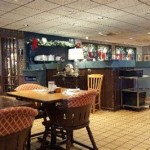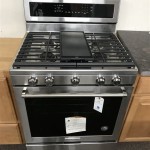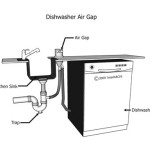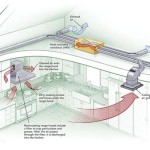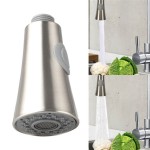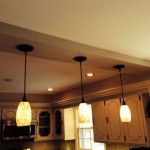Making The Most Of Your RV Kitchen Cabinets
Maximizing space and organization within the limited confines of an RV kitchen is a persistent challenge for recreational vehicle owners. RV kitchen cabinets, often smaller and configured differently than those in traditional homes, necessitate strategic planning and inventive solutions. Effective management of these cabinets directly impacts the functionality and overall enjoyment of the RV living experience. This article delves into practical approaches for optimizing RV kitchen cabinet utilization, focusing on space-saving techniques, organization strategies, and maintenance considerations.
The inherent constraints of RV kitchens demand meticulous attention to how provisions and equipment are stored. Unlike a standard residential kitchen where ample storage space is generally available, RV kitchens require prioritizing essential items and creatively adapting to the available volume. Ignoring these realities can lead to cluttered countertops, inefficient workflow, and difficulty in locating necessary utensils or ingredients. Employing proven organization methods and selecting space-conscious tools are crucial for achieving a functional and aesthetically pleasing RV kitchen.
Prioritizing and Decluttering Your RV Kitchen Cabinets
The first step in optimizing RV kitchen cabinets involves a thorough assessment and subsequent decluttering process. Begin by completely emptying each cabinet to gain a clear understanding of the available space. Lay out all items on a flat surface, such as a dinette table or outdoor picnic table, for easy evaluation. This allows for a comprehensive review of what is currently stored and its relevance to one's typical cooking and dining routines.
Next, systematically categorize each item. Consider grouping items based on their function, such as cooking utensils, food preparation items, serving dishes, or dry goods. This classification process facilitates identifying redundancies and unnecessary items. Ask yourself whether an item is truly essential for RV travel. Does it serve a specific purpose not already covered by another item? If an item is rarely used or easily replaced while on the road, it is likely a candidate for removal.
Items that are determined to be non-essential can be donated, sold, or stored in a permanent residence if applicable. Resist the urge to keep items "just in case.” The limited space in an RV mandates that every item earns its place. Be ruthless in discarding unnecessary duplicates. For example, a full set of china from a traditional home is generally impractical for RV living. Instead, opt for a smaller, lighter-weight set of durable melamine or other shatter-resistant dishes.
Once the decluttering process is complete, proceed to clean the interior of each cabinet. This is an opportune time to remove any debris, dust, or food particles that may have accumulated. Use a mild cleaning solution and a damp cloth. Allow the cabinets to dry completely before replacing any items. This ensures a clean and hygienic storage environment.
Implementing Space-Saving Organization Techniques
After decluttering, the focus shifts to implementing space-saving organization techniques. Several innovative solutions are available specifically designed for RV kitchens. These methods aim to maximize the utilization of vertical space, create designated storage zones, and prevent items from shifting during travel.
Adjustable shelving is a valuable addition to RV kitchen cabinets. Many factory-installed shelves are fixed, limiting flexibility. Installing adjustable shelves allows for customizing the vertical spacing to accommodate items of varying heights. This maximizes the use of the entire cabinet volume and minimizes wasted space. Consider using wire shelving or lightweight plastic shelving to avoid adding excessive weight to the RV.
Cabinet organizers are essential for maintaining order and preventing items from rolling around during transit. These organizers come in various forms, including plate holders, spice racks, and can organizers. Plate holders keep dishes stacked securely, preventing them from breaking or chipping. Spice racks allow for easy access to seasonings, while can organizers neatly store canned goods, maximizing shelf space. Choose organizers made from durable, lightweight materials.
Utilizing the inside of cabinet doors is another effective space-saving technique. Attach spice racks, utensil holders, or small storage containers to the inside of cabinet doors using adhesive strips or screws. These attachments provide additional storage space for frequently used items, keeping them readily accessible. Be mindful of the weight limit of the cabinet doors and avoid overloading them with heavy items. Consider using bungee cords or elastic bands to secure items stored on the door during travel.
Collapsible or nesting cookware and tableware are specifically designed for RV use. These items are designed to stack neatly within each other, minimizing their overall footprint. Invest in a set of collapsible bowls, measuring cups, and colanders to save significant space in your cabinets. Nesting pots and pans are also a worthwhile investment. Look for cookware made from lightweight materials such as aluminum or stainless steel.
Hanging organizers can also be employed in certain situations. Suspend mesh baskets or fabric organizers from cabinet ceilings or walls to store lightweight items such as produce, snacks, or cleaning supplies. These organizers provide additional storage space without taking up valuable shelf space. Ensure that hanging organizers are securely fastened to prevent them from falling during travel.
Maintaining Your RV Kitchen Cabinets
Proper maintenance of RV kitchen cabinets is crucial for ensuring their longevity and functionality. Regular cleaning, preventive measures, and prompt repairs are essential for preserving the cabinets' condition and preventing potential damage.
Regular cleaning is vital for maintaining the hygiene of RV kitchen cabinets. Wipe down the interior and exterior surfaces of the cabinets regularly with a damp cloth and a mild cleaning solution. Address spills and splatters immediately to prevent staining or damage to the finish. Avoid using abrasive cleaners or harsh chemicals, as these can scratch or damage the cabinet surfaces. Periodically check for signs of mold or mildew, especially in areas prone to moisture, such as under the sink. If mold is detected, clean the affected area with a mold-killing solution.
Preventive measures can help minimize wear and tear on RV kitchen cabinets. Line the shelves with shelf liners to protect them from scratches and spills. Use felt pads on the bottom of dishes and cookware to prevent them from scratching the cabinet surfaces. Install cabinet door bumpers to prevent the doors from slamming shut, which can damage the hinges and frames. Regularly inspect the cabinet hinges and latches and tighten them as needed to ensure proper alignment and closure.
Prompt repairs are essential for addressing any damage to RV kitchen cabinets. Repair any cracks, chips, or scratches as soon as possible to prevent them from worsening. Use wood filler or epoxy to repair larger cracks or holes. Replace damaged hardware, such as hinges or latches, immediately. If the cabinet doors are loose or misaligned, adjust the hinges or replace them if necessary. Ignoring minor damage can lead to more significant problems and costly repairs in the future. Consult with a qualified RV repair technician for any major cabinet repairs or replacements.
Consider the weight distribution within the cabinets. Heaviest items should be placed on lower shelves to maintain stability and prevent the RV from becoming top-heavy. Secure items that are prone to shifting during travel with non-slip mats or bungee cords. This minimizes the risk of damage and prevents items from falling out when the cabinets are opened.
Finally, take into account the climate conditions in which the RV will be used. Extreme temperatures and humidity can affect the cabinets' construction materials. In humid environments, consider using dehumidifiers or moisture absorbers to prevent mold and mildew growth. In hot environments, avoid storing items that are susceptible to melting or warping. By proactively managing the environment within the RV, the lifespan of the kitchen cabinets can be extended and their condition preserved.

8 Tips For Making The Most Of Your Rv Kitchen Winnebago

Ultimate Camper Kitchen Ng And Storage Guide Perfect For Rvs Trailers Fifth Wheels The Walking Mermaid Family Travel Blog

23 Rv Design Organization Ideas Extra Space Storage
Tips For Your Rv Kitchen Makeover

Ultimate Camper Kitchen Ng And Storage Guide Perfect For Rvs Trailers Fifth Wheels The Walking Mermaid Family Travel Blog

Rv Remodel Ideas Tips Projects That Will Transform Your

Our 5th Wheel Rv Kitchen Remodel Lessons Learned And Tips

10 Rv Kitchen Storage And Organization Ideas Under 50

Update The Rv Kitchen Backsplashes More Ery S Travels

Painting Rv Cabinets And What I Did Wrong Wildfire Interiors
Related Posts



